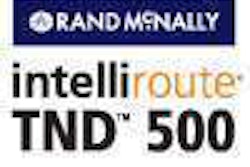 ACS TripPak Services processe carriers' documents at its operations facility in Louisville, Ky.
ACS TripPak Services processe carriers' documents at its operations facility in Louisville, Ky.
Collect, scan, store, retrieve. This once described a highly manual process that carriers used to turn proof-of-delivery documents into electronic images and to prepare invoices.
After collecting paperwork from drivers, clerks sorted and fed documents through scanners. Next, they manually indexed documents by type, trip number, etc., using simple keystrokes. Finally, they retrieved images to review for accuracy before printing and e-mailing images with invoices.
For several years, fleets have been scanning documents remotely. Drivers can scan trip documents at all major truckstops, company kiosks and even from the cab.
Pegasus TransTech and ACS Expedited Solutions both offer truckstop scanning. Pegasus TransTech customers also can scan documents from company kiosks and any computer with an Internet connection, says Siamak Azmoudeh, vice president of Pegasus Transflo, the company’s in-house imaging and workflow software.
Forms recognition is one of the latest technologies being used to remove steps from scanning and indexing in order to deliver a low-touch high-speed billing process that turns loads into cash.
Forms recognition technology is used to identify document by type — bill of lading, weigh ticket, receipt, etc. Some carriers also use the technology to pull alphanumeric codes, such as a bill of lading number, from certain fields in documents.
ACS Expedited Solutions offers a fully outsourced document management service that allows drivers to scan their documents at truckstops or drop their trip envelopes in TripPak boxes.
ACS then processes or scans the documents overnight using forms recognition technology to index the documents automatically and — through integration with fleets’ dispatch software systems — match the documents to the appropriate order numbers.
Even the most advanced forms recognition software will fail to identify some documents, however. For full-blown automation, fleets can outsource the exceptions in the scanning process — documents that software fails to identify — to ACS TripPak Services, a division of ACS that offers a variety of options, including offshore manual data entry to lower the cost of managing exceptions.
“We feel we can give customers the best of all worlds,” says Chad Goins, vice president of service delivery for ACS Expedited Solutions.
For fleets that keep some or all of the imaging process in-house, forms recognition technology still can automate a majority of the indexing process. LoneStar Transportation uses the Ships imaging and workflow solution from EBE Technologies to expedite its high-volume billing process.
Each day, the Fort Worth, Texas-based company collects trip documents from drivers across its 850-truck fleet. Once the documents are fed into high-speed scanners, the Ships software uses forms recognition technology to identify each document by type — a process often called “doc-typing.”
LoneStar Transportation scans 50,000 pages each month. If the indexing process were done manually, a clerk could doc-type at the rate of about 400 pages per hour, says Pete Trosky, the company’s vice president of information technology; Ships’ forms processing system saves about 120 hours a month in labor.
In instances where the software cannot identify documents, the image is sent to a queue for a clerk to doc-type manually. Trosky says these exceptions total about 1,200 pages per month.
Fleets also can use imaging and workflow technology to automate data entry. The Ships system can read content from documents such as load weights or BOL numbers. This information can be compared automatically to the original data entered into a fleet’s dispatch software to catch anomalies.
Fleets that use forms recognition technology typically have drivers fill out a bubble sheet for each load that is scanned with the trip documents for that load. The sheet is used to capture the driver, power unit and the order number for each set of trip documents scanned, says Harold Grant, McLeod Imaging senior project manager.
With McLeod’s DocumentPower Enterprise software, users set up the forms the software will recognize automatically by customer, or “bill to.” The software uses the information from the bubble sheet to find the “bill to” from the order table in a fleet’s dispatch software system. Having this validation process narrows the list of forms the software has to search to identify each document, Grant says. As a result, the indexing process can be done instantaneously.
Forms recognition technology will continue to grow in popularity as companies are willing to make additional investments to speed the delivery-to-cash process, reduce errors and minimize headcount, says Pegasus TransTech’s Azmoudeh. “It’s an area that’s growing,” he says. “It is vital for companies to speed up the whole process.”









